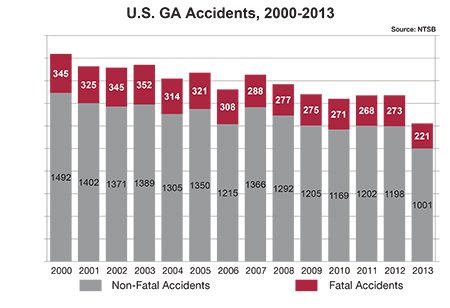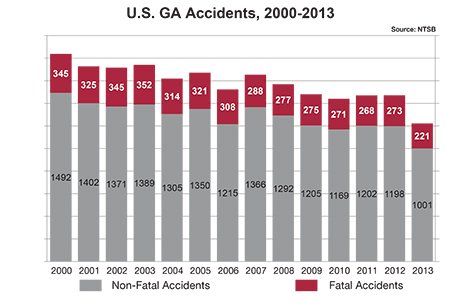Its easy to fall into the trap of debating whether the U.S. general aviation accident rate is too high. Of course it is-all accidents are preventable by simply grounding the fleet. Somewhere between zero and what we have today-preferably on the lower end-is where we all would like to be. Were not even close to getting there, though, and rates arent coming down the way we would like.
Thats especially true given we typically fly more reliable aircraft today, loaded with safety features like airbags and whole-airplane parachutes, and sporting cutting-edge digital instrumentation. In fact, so-called technically advanced airplanes, TAAs, equipped with a GPS-driven moving map and a coupled autopilot, have a higher fatal accident rate than their steam-gauge counterparts. See “Weren’t TAA’s Supposed to Improve Things?” for the details.
The bar chart below depicts total and fatal accidents for the years 2000-2013, as presented by NTSB Member Earl F. Weener late last year at a Board-sponsored safety seminar on TAAs. Yes, the general aviation accident rate is dropping-slowly-and not without its rebounds some years. And here is an interesting factoid to contemplate: Personal, day, VFR flights account for the majority of fatal accidents. Think about that: The most seemingly benign conditions are responsible for the highest fatality rate, in part because thats when everyone wants to fly and, perhaps, in part because everyone also lowers their guard.





